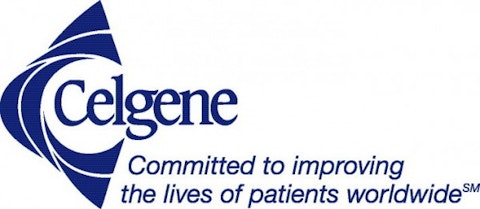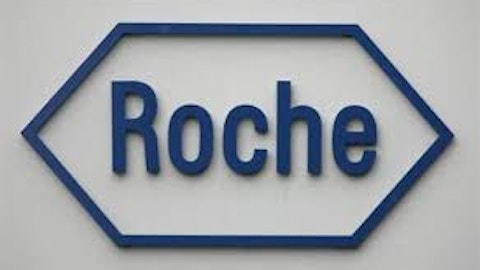Celgene Corporation (NASDAQ:CELG) shareholders didn’t have to wait long for good news in 2013. On Jan. 7, the company announced positive results for two phase 3 studies of apremilast in treating psoriasis. Is apremilast really that big of a deal for Celgene investors? You bet. Here’s why.
All in the family
The clinical success of apremilast is yet another feather in the cap of Celgene’s research and development. It also reflects a continuation of the company’s long history with its granddaddy of drugs, Thalomid. While Thalomid certainly had its ups and downs over nearly 60 years, Celgene’s research with analogs of the drug paid off tremendously with Revlimid, Pomalyst, and now apremilast.

PDE4 inhibitors have shown potential for treating a variety of indications, including chronic obstructive pulmonary disease, asthma, depression, Alzheimer’s disease, and Parkinson’s disease. Celgene Corporation (NASDAQ:CELG)’s focus with apremilast, though, has been on treating inflammatory conditions. Apremilast increases cAMP levels, which then reduces inflammatory responses in cells.
Why investors should love it
So, why should investors love apremilast? Let us count the ways.
Celgene’s first New Drug Application, or NDA, for apremilast will be for psoriatic arthritis. The company expects to submit that NDA in the first quarter, followed by another for psoriasis in the second half of 2013. A combined Marketing Authorization Application, or MAA, for both indications will be submitted in Europe also in the second half of the year.
Psoriatic arthritis and psoriasis present a significant market potential. As many as 125 million people across the world have psoriasis, including up to 7.5 million Americans. Between 10% and 30% of those individuals also develop psoriatic arthritis.
Of course, this huge market already has several major drugs in the mix. AbbVie Inc (NYSE:ABBV)‘s Humira currently stands as the biggest player, followed by Enbrel from Amgen, Inc. (NASDAQ:AMGN) and Pfizer Inc. (NYSE:PFE) and two drugs from Johnson & Johnson (NYSE:JNJ): Remicade and Simponi. Can Celgene realistically expect to compete against these biologic juggernauts? I think it can.
One reason is that apremilast is administered orally rather than via injection as the other drugs are. Another is that the apremilast looks to be quite safer than the other drugs. While Celgene’s drug doesn’t appear to be quite as robust in treating psoriatic arthritis as the biologics, its convenience and safety profile should enable it to gain traction.
Celgene is counting on between $1.5 billion and $2 billion in sales for apremilast by 2017. Considering that Celgene’s current revenue is $5.5 billion, apremilast’s opportunities present plenty of reasons for investors to love this drug.
The article Why Investors Should Love Celgene’s Apremilast originally appeared on Fool.com and is written by Keith Speights.
Fool contributor Keith Speights has no position in any stocks mentioned. The Motley Fool recommends Johnson & Johnson. The Motley Fool owns shares of Johnson & Johnson.
Copyright © 1995 – 2013 The Motley Fool, LLC. All rights reserved. The Motley Fool has a disclosure policy.





